
Table of Contents
Places of Australia is the land of dreams. From Aboriginal sacred Dreamtime legends, when great spirits summon coral reefs, rainforests, and red deserts, to armchair travellers describing Australia as their dream destination, Land Down Under deserves the hype. Australia is the world’s smallest continent and largest island, roughly the size of the United States, but with a population the size of New York State and home to some of the most exotic wildlife on the planet.
Australia is also a land of stunning contrasts and breathtaking beauty. Along the coast, you can explore vibrant cities, vast sand islands, ancient rainforests, and one of the most amazing natural wonders on earth: the Great Barrier Reef. In the hinterland, rugged national parks and laterite deserts offer the ultimate travel adventure.
Fun fact about Australia: Australia is home to more than 10,000 beaches. If you try to visit a new beach every day, it would take nearly 27 years to see them all.
Above all, with a relaxed feel and friendly people, it’s no wonder Australia is at the top of bucket lists around the world. Create your adventure with our list of Australia’s top attractions.
When someone mentions “Sydney, Australia,” most people think of the Opera House. Shaped like a giant seashell or a fluttering sail, this iconic structure at Bennelong Point in Sydney is a UNESCO World Heritage Site and is one of the world’s greatest architectural icons.
The location is excellent. Water surrounds the building on three sides, with the Royal Botanic Gardens bordering it to the south.
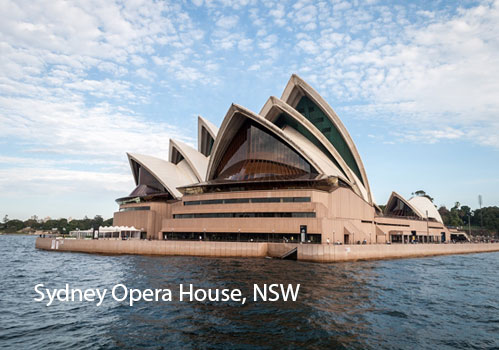
Top-Rated Tourist Attractions In Australia
Danish architect, Jørn Utzon’s design, won an international competition but withdrew from the project after technical and funding problems. It was finally completed in 1973 and cost ten times the original budget. At this time, Wu Zhong had left the country and never returned to see his beautiful creations.
Today, you can catch a show here, dine in one of the restaurants, or take a guided tour of the highlights of the Sydney Opera House. The structure includes theatres, studios, concert halls, exhibition rooms, and a cinema.
A stroll through the interior of the Sydney Opera House is worthwhile, but its stunning architecture is best viewed from a distance. Lady Macquarie’s Chair at the Royal Botanic Gardens is one of the best places to take pictures of this top Sydney tourist attraction, or you can take a cruise at the harbor on a cruise or ferry and take photos of the water as you glide. The Sydney Opera House is undergoing a $275 million, 10-year upgrade but will continue to operate during the restoration.
You can’t leave Australia without seeing the Great Barrier Reef. This World Heritage-listed natural wonder is one of the most significant living structures on Earth. It’s so vast you can see it from outer space. It is a bucket list destination for divers, snorkelers, island lovers, and nature lovers.
In 1975, the Great Barrier Reef Marine Park was established to protect its fragile ecosystem. These include more than 3,000 coral reefs; 600 mainland islands, including the beautiful Whitsundays; 300 corals; and coastal mangrove islands.
One of the Seven Wonders of the Natural World, the park stretches 2,300 kilometres along Queensland on Australia’s east coast (the distance between Mexico and Vancouver).
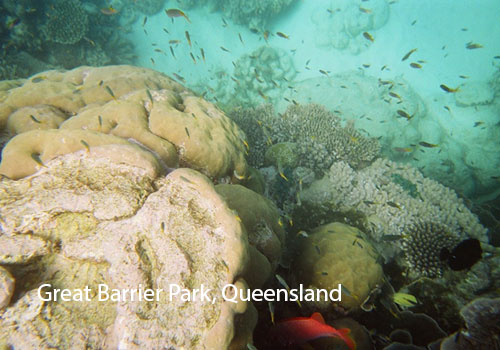
Top-Rated Tourist Attractions In Australia
Not surprisingly, the Great Barrier Reef is one of the best places to visit in Australia for snorkelling and snorkelling. Incredible marine life includes soft and hard corals, more than 1,600 species of tropical fish, sharks, dugongs, dolphins, turtles, rays, and giant oysters. Do you like to stay dry? You can see the coral reef from the underwater observation deck and glass-bottom boat.
Visitors have many options for visiting the Great Barrier Reef. You can sail around the island, take a sightseeing cruise, take a day trip to the island, or snorkel among the coral reefs. The main departure points for tours on the mainland are Cairns, Port Douglas, and Airlie Beach.
Uluru (formerly Ayers Rock), deep in Australia’s Red Centre, is one of the country’s most photographed natural wonders. The stunning red boulders form the heart of Uluru-Kata Tjuta National Park, a World Heritage Site managed by Australian Parks and traditional landowners, the Aṉangu’s.
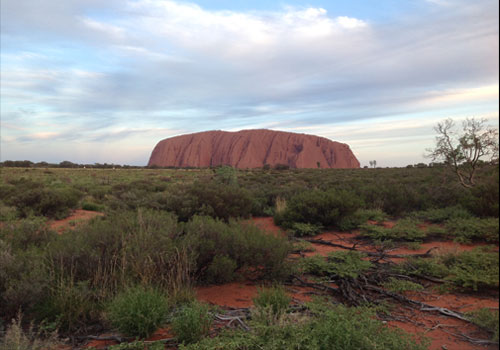
Uluru Kata Tjuta National Park, Northern Territory
Uluru, which means “mysterious place” in the local Aboriginal dialect, rises to 348 meters from the surrounding plains. Much of its volume is hidden beneath the surface. There are also red dome-shaped boulders in the park called Kata Tjuta (Olgas). As the sun sets, visitors gather to watch Uluru and Kata Tjuta change colour in the changing light. A great way to see these sacred sites is to take a tour led by Aboriginal guides and rangers.
Besides the Opera House, the Sydney Harbour Bridge is one of Australia’s leading architectural icons. Nicknamed the Kohangar, this magnificent structure is the largest steel arch bridge in the world. Completed in 1932, 40 years before the Sydney Opera House.
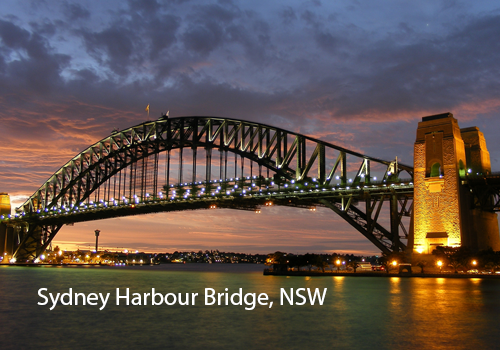
Top-Rated Tourist Attractions In Australia
One of the best things to do in Sydney is a guided hike to the top of the bridge, where you can enjoy stunning views of the harbor and city. The bridge rises 134m above the harbor and is 500m long, linking Sydney’s North Shore to the CBD. In addition to the sidewalk, there are two rail lines on the bridge and eight lanes of road traffic, each of which can change direction based on traffic flow.
Fun fact: Paul Hogan of Crocodile Dundee fame worked as a bridge painter before becoming an international star.
The beautiful Blue Mountains National Park, a UNESCO World Heritage Site, is a hiker’s paradise and a popular day trip from Sydney. It’s a 50-mile drive west of town.
Named for the blue mist emanating from many eucalyptus trees, this stunning park protects over 664,000 acres of wilderness. Here you can explore beautiful valleys, waterfalls, Aboriginal petroglyphs, and 140 kilometres of hiking trails.

Top-Rated Tourist Attractions In Australia
The most famous attraction in Blue Mountains National Park is the towering sandstone rock formation known as the Three Sisters. Other highlights include the scenic Katoomba Railway, the most dangerous railway in the world, which takes passengers through the Jamison Valley and cliff-side tunnels into the ancient rainforest; the Skyway, Scenic Cableway, and Scenic Walkway, accessible from Admire the lush forest from above. Hiking, downhill, rock climbing, mountain biking, and horseback riding are popular activities in the park.
Melbourne is Australia’s second-largest city and is a popular stop on many Australian itineraries, especially for culture lovers. Galleries, theatres, restaurants, shops, and their distinctive European style are the main attractions of this refined city on the banks of the Yarra River. It is also a green city, with parks, gardens, and open spaces occupying nearly a third of its total area.
Melbourne’s cultural attractions abound. See masterpieces at the National Gallery of Victoria, see a performance at the Melbourne Arts Centre, or head to Union Square. Here you can explore Australian art at the Ian Potter Gallery and learn about the country’s film culture at the Australian Centre for the Moving Image (ACMI).
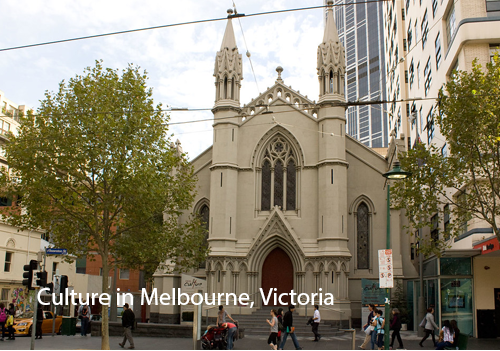
Top-Rated Tourist Attractions In Australia
Do you want to get back to nature? Walk along the Aboriginal Heritage Walk at the Royal Botanic Gardens. If sports culture is high on your agenda, play at the Melbourne Cricket Ground. Cricket is the most popular sport in summer. In winter, it’s the rules of Australian football.
Melbourne also has a rich history. You can see it in gold rush-funded Victorian grandeur, in elegant galleries and shop at Queen Victoria Market, which has sold Melbourne for over a century.
Bronzed bodies, golden sand, backpackers, surfers – toss for one of the most famous beaches in the world. Just a 15-minute drive from Sydney’s city centre, Bondi Beach is the perfect place to experience Sydney beach culture. Soak up the sun on the golden sand, take a break from the surf, or dip on a hot summer day (but stay between the flags).
Few cities worldwide claim to have such stunning beaches and seas so close to the town. No wonder it’s one of the best beaches in Sydney. You’ll also find some history here: Bondi has one of the oldest lifesaving surf clubs in the world.
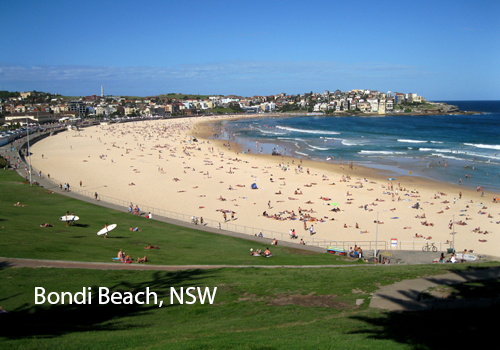
Top-Rated Tourist Attractions In Australia
Away from the beach, you’ll find plenty to do in Bondi. Stroll along Bondi to the Bronte Coastal Walk. It starts at the southern end of the beach and travels 6 kilometres along the coast along sandstone cliffs and is scenic. If your appetite grows, you’ll find plenty of cafes and restaurants nearby. You can also look for deals at the Sunday market or dip in some of the courses in the ocean pool.
Bundy also has a wild side. Crowds of tourists and locals gather to celebrate Christmas and ring the New Year’s bell. A favourite place for travellers.
A word to the wise: if you swim in Bondi, be sure to swim between the red and yellow flags. Unsuspecting swimmers are often swept out to sea by the strong waves, especially at the southern end of the kilometre-long strip. There’s a reason Australians make a reality show called Bondi Rescue.
Daintree National Park in northern Queensland is a Wetland World Heritage Area, one of the oldest ecosystems on Earth. The area belongs to the Eastern Koku Yalangi people, and many of its natural features are of great spiritual significance.
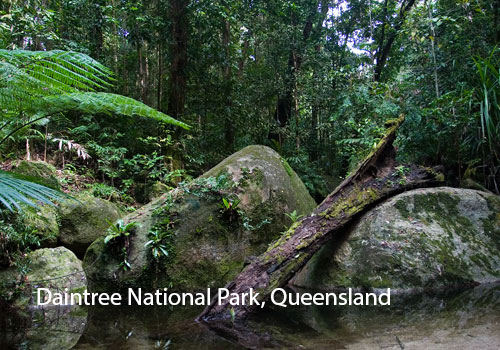
Top-Rated Tourist Attractions In Australia
The park has two main parts: Mossman Gorge, where crystal clear water flows over granite boulders, and Cape Tribulation, one of the most beautiful spots in Australia. Here, the rainforest meets coral reefs along the white-sand beaches of the Coral Sea. This stunning stretch of coast is one of the few places in the world where two of the richest ecosystems on Earth meet.
The park’s fantastic biodiversity includes over 18,000 plants and a wide variety of animal species, including cassowaries, crocodiles, the giant blue Ulysses butterfly, and Bennett’s secret tree kangaroo. The resort town of Port Douglas is just south of the park and is an ideal base for arranging wilderness safaris within the park.
Listed on the World Heritage List, K’Gari (Fraser Island) is one of Australia’s most unique tourist destinations. Located between Bundaberg and Brisbane on the east coast of Australia, it is the largest sand island in the world. Here, you’ll find seemingly endless sandy beaches, seas, turquoise lakes, verdant rainforests, rolling dunes, and gorgeous wildlife.
Are you looking for an adrenaline rush? A 4WD tour along fun-filled beaches is one of the best outdoor adventures in Australia. Along the windswept Seventy-Five Mile Beach, you can see rusted shipwreck structures, colourful sandstone cliffs of churches, rocks known as champagne baths, and fish ponds.
Adventures indoors are just as exciting. Highlights include crystal-clear freshwater streams and lakes, some fed by springs and others perched amidst towering dunes, ancient rainforests teeming with an astonishing diversity of flora and fauna.
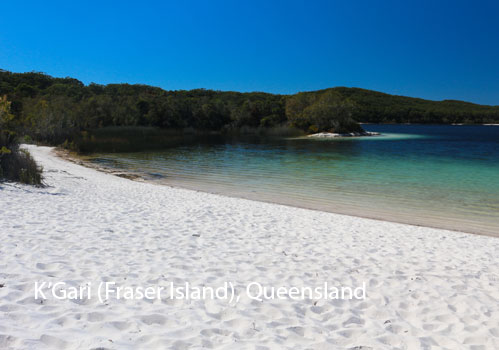
Top-Rated Tourist Attractions In Australia
Nature lovers will find many other activities on Kgary Fraser Island. Take a whale-watching cruise, sunset cruise, hike the Rainforest Trail at Grand Central Station, walk the Elle Creek Trail, or soar over the scenic area on scenic rides.
Fraser Island is accessible by ferry from the two main entry cities of Rainbow Beach and Hervey Bay. A 4WD vehicle is a must as there are no closed roads on the island.
Regarding wilderness areas, Kakadu National Park showcases the best of Australia. Covering over 19,840 square kilometres in the Northern Territory, it is the second-largest national park in the world. You can explore monsoon rainforests, mangrove swamps, rivers and valleys, ancient petroglyphs, wetlands, and waterfalls within its borders.
Kakadu is also home to a variety of wildlife. In addition to many mammals, reptiles, and fish, more than 300 species of birds live here, and freshwater and saltwater crocodiles have been found in the wetlands.
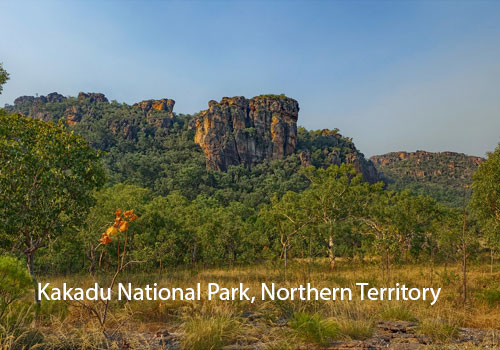
Top-Rated Tourist Attractions In Australia
To explore the park’s diverse ecosystem, cruise along the waterways or stroll the extensive trail network. You can also take scenic tours.
Kakadu National Park is easy to visit from Darwin during the dry season. It is about a three-hour drive from the capital of the Northern Territory. Many roads and attractions are closed during the rainy season (November to April) due to significant flooding, but waterfalls and wetlands work best.
The Great Ocean Road is one of the most scenic roads in the world. Built to employ during the Great Depression, the road stretches 300km along Australia’s rugged southeast coast, winding its way along sheer sea cliffs. It stretches from the surfing town of Torquay to the city of Allansford near Warrnambool.
Port Campbell National Park is one of the main attractions on the Great Ocean Road. Here you can see the wind-sculpted rock formations known as the Twelve Apostles, London Bridge, Arches, and Loch Ard Gorge. From the air, the rock formations look like giant puzzle pieces floating on the coast, beaten by the waves of the Southern Ocean.
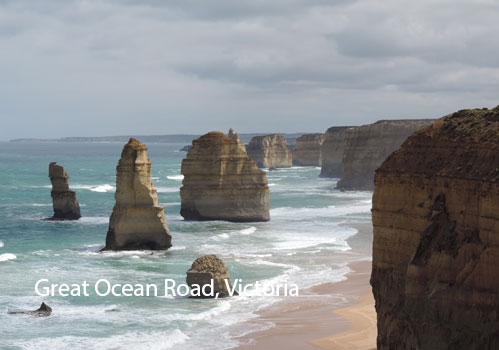
Top-Rated Tourist Attractions In Australia
Along the Great Ocean Road, you will find many things to do. Stop at the National Surfing Museum of Australia in Torquay, surf the famous waves at Bells Beach, stop at the seaside resort of Lorne, or go whale watching at Warrnambool. Nature lovers will also love exploring Otway National Park’s eucalyptus forests, fern-rich rainforests, and hiking trails and waterfalls.
Broome, located in northwest Australia, was once the pearl capital of the world. Today it is a thriving tourist town and gateway to the beautiful Kimberley region.
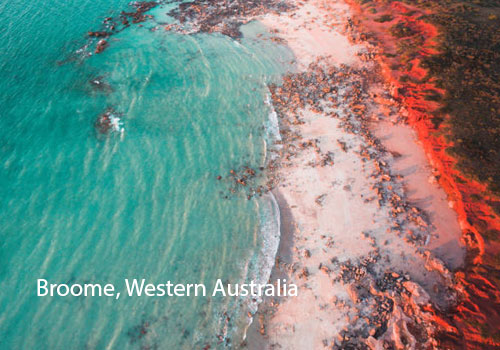
Top-Rated Tourist Attractions In Australia
The star of Broome’s attractions is Cable Beach. This endless stretch of white sand and turquoise waters is one of the best beaches in Australia, and camel riding at sunset is one of the most popular activities here.
Tourists also flock to the town’s beach to see the steps to the moon. This phenomenon occurs under certain conditions between March and October when moonlight creates the optical illusion of a staircase leading to the moon.
Other highlights in Broome include the red cliffs at Gantheaume Point and Malcolm Douglas Crocodile Park, where you can get up close and personal with crocodiles, birds, and kangaroos. If you’re looking for something to do in the city, learn about local history at the Broome Historical Museum, or watch a movie on a sun lounger under the stars at Sun Pictures. Pearl farm tours, whale watching tours, and Kimberley adventure tours are top activities in Broome.
Nature takes centre stage on Kangaroo Island. On this unspoiled island off South Australia’s Florio Peninsula, kangaroos hop along powdery shores, sea lions and penguins frolic in crystal clear waters, and koalas snuggle in fragrant eucalyptus trees.
Diving is also great. You can spot sea dragons in temperate waters and dive into shipwrecks off the coast of islands.
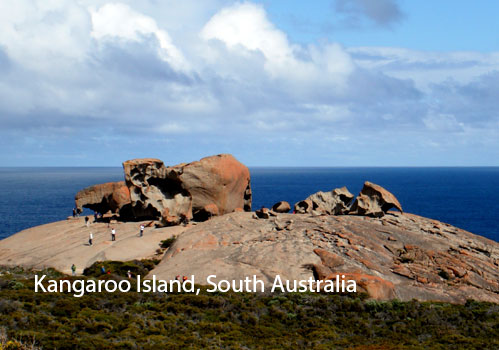
Top-Rated Tourist Attractions In Australia
The main attraction of Kangaroo Island is the creation of nature. Visit the stunning wind-sculpted rock formations known as Remarkable Rock and Admiral’s Arch in Flinders Chase National Park. Explore the vast cave system. Browse towering dunes and look for wildlife on scenic hiking trails along towering sea cliffs and native forests.
Foodies will also be in heaven. Cream cheese, Ligurian honey, and fresh seafood accompany local restaurant dishes. To get here, you can fly directly to the island from Adelaide or take a ferry from Cape Jervis on the Fleurieu Peninsula. In 2020, Kangaroo Island was devastated by wildfires, but the island is recovering, and attractions are reopening.
Cradle Mountain-Lake Street Clare National Park is one of Tasmania’s tourist attractions and a nature lover’s paradise. Glittering lakes, jagged Dolomite peaks, high mountains, and lush forests characterize the icy wilderness here. A highlight of the park is Mount Ossa, which at 1,616 meters is the highest point in Tasmania.
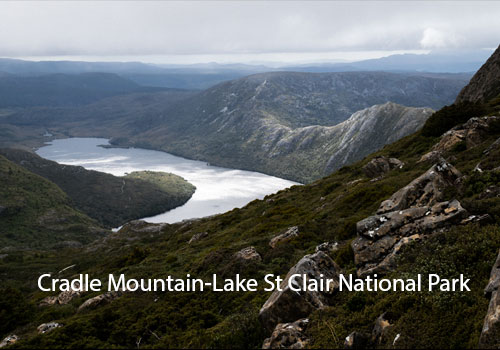
Top-Rated Tourist Attractions In Australia
Unsurprisingly, the walk here is excellent. Favourite trails include the Weindorfer Walk, a 4-mile loop through dense forest, and the Lake Dove Walk, which offers stunning views of Cradle Mountain (5,000 feet). Standing on top of Cradle Mountain, you can enjoy stunning views of the Central Highlands. Experienced hikers can also head to the 80km Overland Track, which runs south from Cradle Valley to Lake St Clair, Australia’s deepest lake. As you explore the park, keep an eye out for the many bizarre and incredible wildlife including Tasmanian devils, wombats, baboons, pets, and platypi.
Adventures abound in Kimberley. Covering the northwest corner of Australia, this remote and rugged region has red rocks, open valleys, scorched earth, and a coastline dotted with rocky cliffs, ready to be explored.
Horizontal Falls is one of the best adventures in Kimberley. Powerful tides of up to 11 meters rise through two narrow straits, creating this astonishing phenomenon. Board a jet boat and dash across the sea through boiling waterfalls.
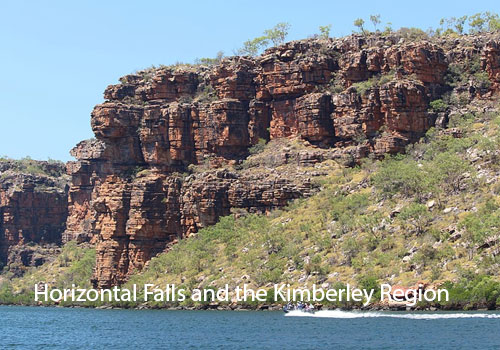
Top-Rated Tourist Attractions In Australia
Bloom is the portal. From here, you can fly along the cliffs of the Deep Red Sea and see the more than 800 islands of the Pirate Archipelago. Head north to the wild beaches of Cape Levik to visit remote pearl farms and Aboriginal communities. Go on a 4×4 safari along the Jeep River Walk, one of Australia’s most popular 4×4 walks.
Kimberley is also home to the majestic Mitchell Falls and the UNESCO World Heritage-listed Bonoruru (Bungalow) National Park. These magnificent honeycomb formations were only discovered in 1983. Stroll along the trails to see sacred Aboriginal ceremonial sites and petroglyphs, or fly over the park for a scenic ride and visit the Argyle Diamond Mine.
Since 2017, Saba Ghani has been serving as the talented and dedicated chief content writer for Pakistan Tour and Travel & EMHI Solutions. With her exceptional writing skills and in-depth knowledge of the travel industry, she has been instrumental in crafting engaging and informative content that captivates the audience. You can catch her at saba@pakistantourntravel.com or Twitter
12Years of relentless tourism Services in Pakistan